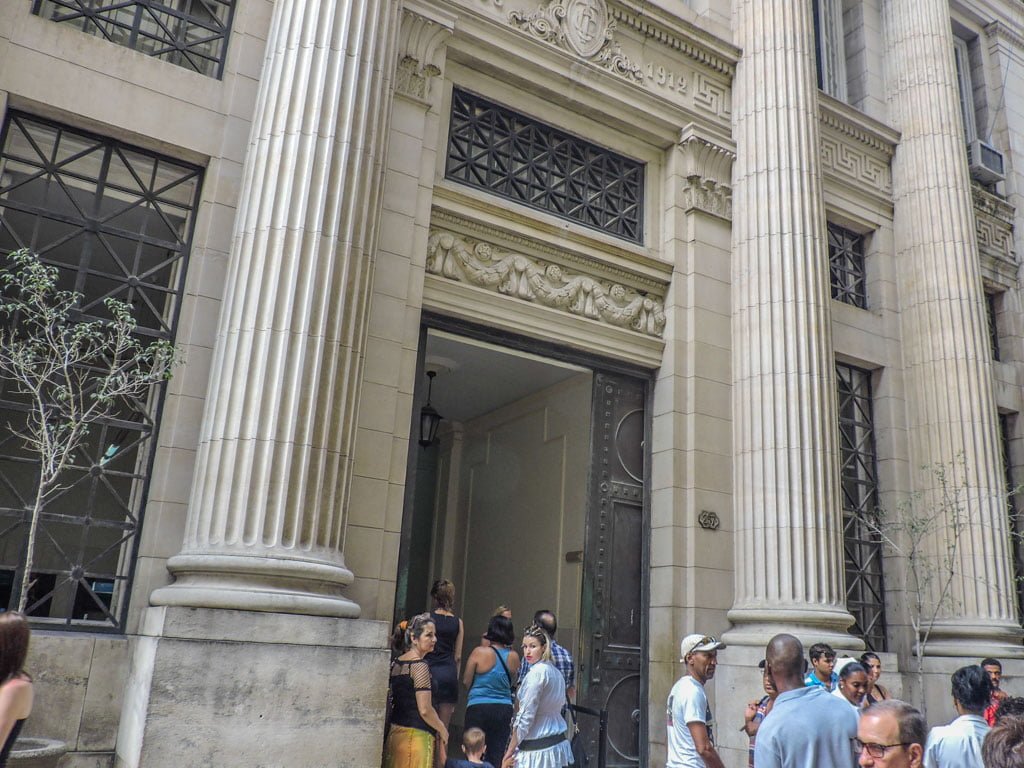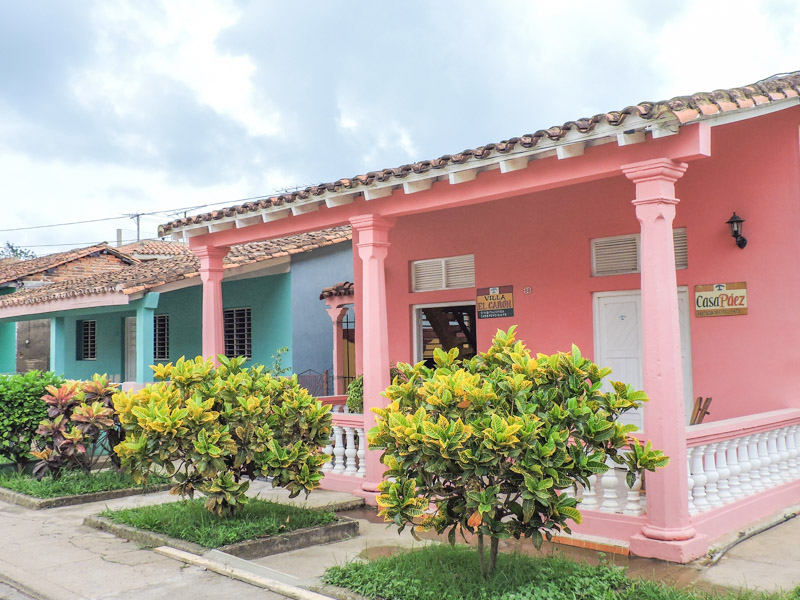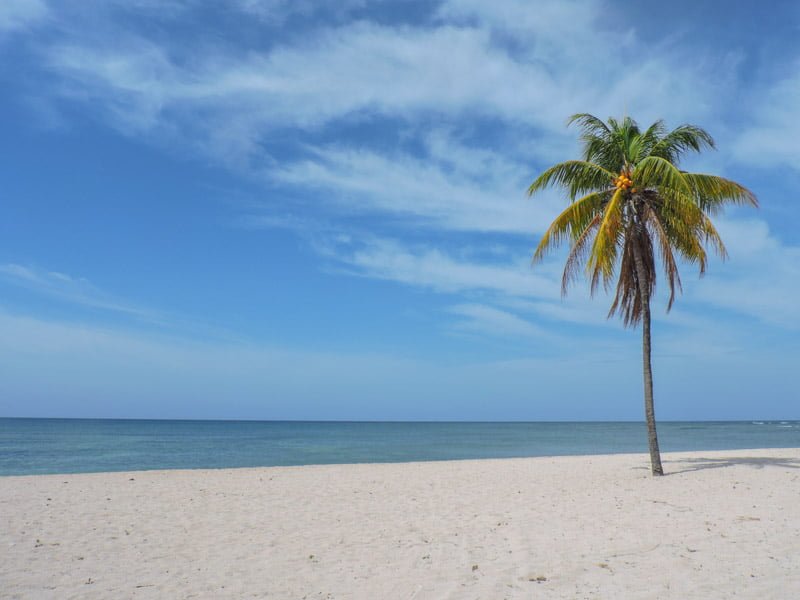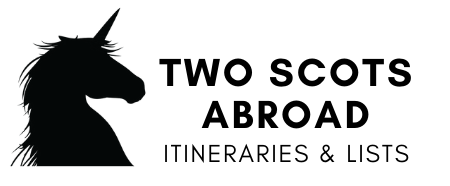This article has links to products and services we love, which we may make commission from.
Cuba’s currency has changed – locals and tourists say goodbye to the so-called dual currency system and hello to the reactivation of the historic national currency, the Cuban peso (CUP). However, visitors are reporting that you might not actually use any pesos while visiting Cuba.
This guide will detail everything you need to know about Cuban currency, whether you can use your credit card in Cuba, and what money to take.
Want to share your currency in Cuba experience? Please leave a comment at the end of this guide or contact us.
Traveling to Cuba soon? Here’s our first-timer’s guide to Cuba
What Type of Cuba Currency Is There?
There is now one unified currency in Cuba, the Cuban peso (CUP).
However, recently returned travelers state that they didn’t need pesos at all.
Previously, there were two currencies.
The CUP, outlined above, and the historic Cuban convertible peso (CUC).
The Cuban convertible peso (CUC, pronounced Cook) was the so-called Cuban tourist currency used daily by foreigners to pay for accommodation such as casas particulares, buses, taxis, tours, and food.
Here is how to tell the difference between the two notes.
- CUP = Pesos, pictures of people on the bill/note.
- CUC = Convertibles, pictures of monuments on the bill/note
The 3 peso note is popular with visitors because it has Che Guevara’s face.

Can I Get Cuban Currency in the UK/US/etc.?
No, you can’t exchange your native currency for Cuba in your home country or anywhere in the world apart from Cuba.
However, it looks like you don’t need to worry about Cuban pesos, as hotels, restaurants, and taxis accept US dollars (USD).
You can also exchange money in these places, and it is suggested that the street exchange value is much better than rates offered at official establishments.
Thanks to Tim, Carl, and Vader in the comments for this update.
Previously, pound sterling (GBP) and euros (EUR) were also accepted, although this may not be the case anymore.
Note: Some locals refer to the pound as sterling or libra; remember that if you are trying to exchange money.
Some hotels have been reported to offer a 25% discount on the food bill if you pay with a GBP or USD credit card.
Thanks to A. Loch for the feedback from their most recent trip to Cuba.
You may also like our guide to scams in Cuba that actually happen.

What Currency to Take to Cuba?
You can’t buy CUP in other countries like you can buy euros for your trip to, say, Paris.
Previously, visitors took pounds sterling (GBP), euros (EUR), and Canadian dollars (CAD).
However, a reader called Carl has returned from Cuba and states:
“Under no circumstances should you take GBP/pound sterling to Cuba to exchange for Cuban pesos or even for spending in restaurants/shops/on tours.
They can be used but are converted at the same rate as euros/USD & Canadian dollars when changing on the street/using in shops/hopping into taxis.
So you’ll effectively lose up to 30% of its value.
We spent time in Havana, Playa Coco, Santa Clara, Trinidad…
Time and time again, we were repeatedly told that the GBP (known locally as ‘libra’) rate was the same as the USD./euro/C$.
The ‘street’ USD rate was as high as 217 pesos to the dollar/euro.
So, for example, changing GBP/£200 at CUP215:USD1, we were effectively losing USD60 or CUP12,900.
The official state-run bureau rate was CUP150 for the GBP.
We had no problem changing GBP on the street. Just check the notes carefully for rips.
So Brits should really only bring USD/euros or even Canadian dollars.
Another thing to be aware of is that many prices (restaurants, tours, taxis, public transport, shops) are quoted in USD or euros.
If you want to pay in CUP/pesos, they will use an exchange rate of 200-220.
So unless you’ve changed money near that rate, you’ll lose money.”
Vader also says:
“Take US dollars. The current street rate is 255 CUP to the dollar.
Ensure you receive notes that are not torn.
An easy way to ensure you are not scammed is by recognising CUP has faces on the notes whilst the old CUC has monuments.”
What is the Cuba Exchange Rate for USD?
Up until July 2020, there was a 10% conversion fee on the US “greenback” dollar.
This meant visitors were charged the 3% conversation fee discussed above and a further 10% fee, so 13% fee in total.
Previously, this would have meant:
- $10 USD – 13% (1.30) = $8.70
- $100 USD – 13% (13) = $87
According to many news outlets, as of July 2020, the 10% tax has now been scrapped.
Do you have experience of this?
Please leave us a comment or email gemma(at)twoscotsabroad(dot)com.
How to Get Cuban Currency
As mentioned above, you might not need Cuban currency during your trip.
However, for your own knowledge, here is how to get Cuban currency.
The official Cuba money exchange is called CaDeCa (Casa de Cambio).
They can be found everywhere in Havana and the bigger cities but less so in smaller towns.
We were caught out in Caleton by Playa Larga as the bank hours were limited.
Luckily, new friends lent us some CUC to dive at the Bay of Pigs the next day.
To exchange money at CaDeCa, you need the following:
- An early rise
- Your passport
- Patience
Be prepared to wait in long lines.
I read that CADECA shops close at 3pm so get there early, at opening times is recommended.
Although changing money in Cuba is not impossible, it can be taxing on time.
There are two CADECA at Havana airport, check upstairs for the quieter one which had no line when we arrived.
It is recommended to exchange as much as you are comfortable with at the airport.
The airport ATM did not work during our departure.
Cue panic as we were not aware that there was a tax you have to pay to leave.
Luckily, our airline had already covered it.
Please read our guide to Cuba to avoid the silly mistakes we made.
You can also exchange USD, GBP or EUR to peso locally; ask your casa host, hotels or taxi drivers.

Should I Exchange Money at my Casa?
It is common for visitors to exchange money at their casa.
Not all casas will offer this service, but they will point you in the right direction of who can help if you want to exchange money.
You can shop around this way, too.
Have you exchanged money at your casa? Please share your experience in the comments below.
Read next: a guide to casas in Cuba.
What about ATMs in Cuba?
There are ‘holes in the wall’ ATMs in Cuba, and we used them after our cash ran out.
Non-US Visa is the preferred card. Others may not work.
Again, there may be lines and there are instances when the money runs out. ATMs also max out, so you may have to return for more.
Cash may come out before your card, so remember to lift it from the machine, or it will get swallowed. We had a swallowed card incident in Peru and it sucked, boom boom!
Overall, getting cash in Cuba is relatively easy if you have a non-US card that works, can beat the crowds and don’t mind making a few runs.
Can You Use Credit Cards in Cuba?
Increasingly, hotels, restaurants and tours accept non-US credit cards.
It isn’t certain whether your credit card will work in Cuba, so it is best to have cash, too.

So How Much Does Cuba Cost?
The total budget for 3 weeks in Cuba came to 1903.50 USD.
That’s 90 USD daily for two people with limited activities and one week in an all-inclusive resort.

Frequently Asked Questions
What money is used in Cuba?
Officially, the currency used in Cuba is the Cuban peso (CUP), but USD, EUR or CAD are widely accepted.
Can I use USD in Cuba?
Possibly. Most say the street value for USD exchange is good.
Should I exchange my USD before I go to Cuba?
You can’t actually exchange USD to CUP outside of Cuba.
Should I exchange my USD for another currency before I travel?
Readers in the comments below suggest USD is now widely accepted.
Our Cuba Guides

Final Words
I hope this has helped answer your question – what currency do you use in Cuba?
To recap, the best currency to take to Cuba was either USD, EUR, or CAD, depending on where you are traveling from.
In the comments section, readers suggest USD.

Any questions or comments?
Have the experience to share?
Please leave below.


Just returned from Cuba, current rate on the street is 250 to 295 Cup / Eur or USD.
A debit / credit card is the last resort, both in terms of x-rate and very low acceptance.
You will need to carry low denomination notes in Cup if you want to use any toilets (50Cup), as tipping is widely expected in all service jobs.
At every restaurant we checked whether to pay in Cup or EUR, in order to get best value. Sometimes leaving the restaurant to exchange CUP, saving up to 40% on the bill!
That’s great, thank you for sharing your experience Steve. Did you enjoy your trip?
This article is confusing. It is titled Cuba currency: everything you need to know for 2024, but it claims that 1 USD = 24 CUC as I read further is gives a much different value. which is correct?
Hi Wayne. Apologies that you found the article confusing. Cuba now only uses CUP but most travelers says that USD is widely accepted. I have gone through the guide and updated so that it reflects the feedback from provided by visitors via the comments section of the post. Hope you have a great trip. Come back and let me know how you get on.